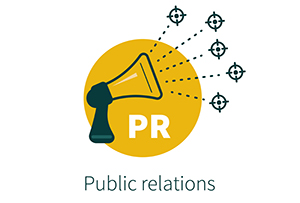

Reasons why PR matters
From “the press release is dead” to “PR is dead. Long live SEO” (or variations on those themes), there have been some catch phrases and other memes going around to suggest that public relations practitioners may be as endangered as Rhinos.. Nothing could be further from the truth.
The PR industry is going significant change and more than its share of growing pains, but the importance of effective communications has never been more pronounced than in today’s integrated media environment.
- In era of Social Media, messaging is key
Engaging on social media, or have lots of “likes” and followers is not enough. If an organisation is not communicating its key messages, any social media effort is a waste of time. Here is where a seasoned professional communicator plays a key role. Helping hone messages and ensuring all communications contain at least one key message.
- Reputation Management is of critical importance.
Reputation must be top of mind, particularly at the executive level, and even in the at the smallest companies. We are even seeing a trend of chief reputation officers being appointed. Good reputation management is good PR.
- Crisis is chronic
The South African business scandals of 2017 has shown us how crucial effective crisis management is. In today’s fast-paced media landscape, an ultra-quick response with finely-tuned messaging is a must. Incidents like the Gupta Leaks and related corporate failings of SAP, KPMG and others has shown us not matter how good the executive level thinks it is at handling a crisis , without good PR advice and a proper crisis plan disaster waits.
- Visibility is a both an art and a science
The rise of social media and SEO metrics have convinced some that brand visibility is solely a matter of numbers and metrics. However, great positioning is also the product of craftsmanship. We can’t forget that the quality and targeting of the message is of paramount importance.
- Marketing people are not automatically social media geniuses
It is popular to say that social media management is the domain of marketing. But social media is about communities and engagement, and the goal is to achieve earned influence. While PR has some work to do when it comes to mastering social media, it is still the best equipped to leverage the social message.
- The media is alive and kicking
The scenery has changed, but the media remains the primary influencer of public opinion. And while PR practitioners have had to adapt and become more agile to keep up with the media’s new modus operandi, they are still the pros at this.
- It is all the economy’s fault!
Many organisations, are on tighter budgets and don’t have as much to spend as they might like on integrated marketing. PR is still the most cost-effective way to communicate to a broad audience
- Content and context
From blog posts to by lines to webinars to tweets, good content builds the face of the organisation. PR should steer that ship as communicators know when, why and how best to send the message. It is all in the timing, providing the right context gives content the chance to really flourish
- Values make your brand
In the era of the Global Village, an organisation’s values are of utmost important to the public, and make up a bigger portion of its brand strength than ever.
- There is, in fact, a ROI
You cannot just slap a Rand value on media placements and call it a day. Part of the challenge of measuring ROI is the intangible reservoir of goodwill that PR builds. Public confidence in a brand is the measure of that goodwill. Quantifying public confidence can be accomplished through a combination of surveys, media tone analysis, traditional ad values and circulation numbers, market penetration, brand buzz, etc.
However the ROI is calculated, it must be clear that it is about more than just rands and cents. As companies have learned, building a reservoir of goodwill can help companies overcome crises during which their reputations are under scrutiny.
